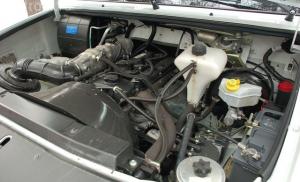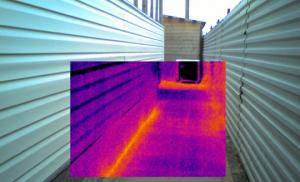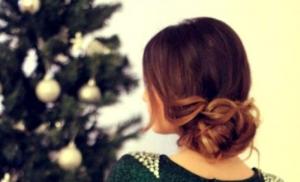Savior not made by hands. Spas not made by hands Paintings on the theme of apple spas
With. 66¦
7. Savior Not Made by Hands 1 . On the back - The glorification of the cross
1 The type of the Savior “on the skull”, in contrast to the Savior Not Made by Hands “on the edge” (see frescoes on the eastern and western girth arches in the Church of the Savior of Nereditsa; V.K. Myasoedov, Frescoes of the Savior of Nereditsa, L., 1925, pl. XIX ). For numerous variants of the legend of the Savior Not Made by Hands, see N.V. Pokrovsky. Siysk icon-painting original, no. 1, St. Petersburg, 1895, pp. 49–52.
Both sides of the icon were painted in Vladimir, perhaps by different masters. The Vladimir painter of the front side with the Savior Not Made by Hands in his own way reproduced the Byzantine or rather Kyiv model. It is possible that the artist of the glorification of the cross on the back could be a Kyivian or Novgorodian who worked in Vladimir in the middle of the 12th century (see the arguments in favor of my attribution from N. N. Voronin, in his article “On Some Reliefs of St. George's Cathedral in Yuryev Polsky” . - "Soviet archeology", M., 1962, I, pp. 142–148).
Middle of the 12th century. Vladimir-Suzdal Rus.
The head of the Savior is enclosed in a round halo with a crosshair, inscribed in the square of the board. Large round eyes raised to the left. The high arches of the eyebrows are curved. A forked beard and a long hanging mustache are written in thin dark brown lines on a greenish-gray refty. Black-brown hair with a strand on the forehead is decorated with golden lines. The twist on the olive sankir is dark yellow, soft in tone, with barely noticeable traces of brown. On the lips, eyelids and description of the nose - cinnabar. Nimbus, background and fields are golden-ocher. Nimbus crosshair - ivory tone, with traces With. 66
With. 67¦ images of precious stones (five at each end). In the upper corners against the background are fragments of the ancient letters IC XC.
Glorifying the Cross 2. On the sides of the Golgotha brown eight-pointed cross, with a crown of thorns at the crosshairs, there are worshiping archangels with instruments of passions. On the left is Michael with a spear in his hand, on the right is Gabriel with a cane. Above - red-winged seraphim with ripids in their hands, dark olive cherubs and personifications of the sun and moon - profile heads in round stamps - yellow (inscription: slontse) and red (inscription: moon). The painting is done with energetic strokes in a broad, free manner. The coloring is built on a combination of dark colors (brown and olive), faded (light blue and brownish-pink) and bright (red, yellow and white). A twist on a green sankir with sharp white highlights and a bright brown. The background is white with black and red lettering. The fields are dark green with an ornament in the form of circles, stars and stripes. In a few inscriptions, the peculiarities of the Novgorod language are not manifested: “six krilati Khrovimi”, “mongociti seraphim”.
2 This theme in Byzantine iconography was known as "Nikitirion" (glorification of the victorious cross). (See N. P. Kondakov, Archaeological Journey through Syria and Palestine, St. Petersburg, 1904, p. 22 and note 1 and the appendix “On Ancient Christian Compositions on the Theme “Glory of the Cross”, pp. 285–301). The iconographic type goes back to old Syrian sources (V. N. Lazarev, Art of Novgorod, Moscow, 1947, p. 39). Stylistically, the angels are close to the angels in the Ascension composition in the Church of the Savior Nereditsa in Novgorod (V.K. Myasoedov, op. cit., pl. V, 2).
On the front side there is a board with an ark. Pavoloka, gesso, egg tempera. Back without ark and canvas, with a thin primer. The dowels are stuffed on the upper and lower ends. 77x71.
On the front side (in the lower left corner) and on the back (near the upper edge) there are red wax seals of the Moscow Assumption Cathedral.
Was in the Assumption Cathedral of the Moscow Kremlin.
Disclosed to the Commission in 1919.
Received from the State Historical Museum in 1930. With. 67
¦
| Lazarev 2000/1 |
With. 164¦
5. Savior Not Made by Hands, turnover - Adoration of the Cross
Second half of the 12th century. 77×71. Tretyakov Gallery, Moscow.
From the Assumption Cathedral in the Moscow Kremlin. The Novgorod origin of the icon is beyond doubt. This is also supported by pronounced Novgorodisms in the inscriptions on the reverse side of the icon (the replacement of the letter h letter c), and the similarity of angels with angels in the dome and apse of Nereditsa (Myasoedov V.K. Frescoes of the Savior-Nereditsa. With a preface by N. P. Sychev. L., 1925, tab. IV, VI and XXVIII), and the reproduction of the composition of the front side of the icon (and partially its reverse side) in the headpiece of the Novgorod manuscript of 1262 (Lobkovsky Prologue in the Moscow Historical Museum, Chlud. 187, fol. 1). As G. I. Vzdornov established, the icon comes from the Novgorod wooden church of St. Icon built by Vnezd Nezdinich in 1191. The safety is good. The type of the Savior Not Made by Hands exactly follows the Byzantine tradition (see: Grabar A. N. The Savior Not Made by Hands of the Lansky Cathedral. Prague, 1931). “Glorification of the Cross” is already found on a silver dish of the 6th century in the Hermitage ( Volbach F. Frühchristliche Kunst. Munich, 1958, Abb. 245, S. 91). On the Moscow icon, the cross is decorated with a crown of thorns, in the hands of angels - a spear and a cane. These are symbols of the torment of Christ. The cross rises above the black Adam's cave. On the sides of the crosshairs are the sun and the moon. Above are two cherubs and two seraphim with ripids in their hands. For iconography see: Kondakov N.P. Archaeological journey through Syria and Palestine. SPb., 1904, p. 22, 285-301; Grabar A. Martyrium, II. Paris, 1946, p. 275–290. Whether the icon was double-sided from the very beginning or the image on the reverse side was added later is difficult to decide. With. 164
¦
Savior not made by hands
Second half of the 12th century Novgorod. State Tretyakov Gallery, Moscow
According to legend, the king of the Asia Minor city of Edessa, Avgar, who suffered from an incurable disease, sent an artist to Christ to depict the face of the Savior, which would help him heal. However, the miraculous radiance around Christ prevented the artist from capturing his appearance, and then Christ washed his face, wiped it with a cloth (timber), on which his face was miraculously imprinted - the Image Not Made by Hands. King Avgar was healed from the Image of the Savior Not Made by Hands, after which the Image was placed on the city wall to protect Edessa from enemies, and in 944 was transferred to Constantinople and became the basis for the iconographic type - the Savior Not Made by Hands.
On the icon, the face of the Savior is strict and severe, almost perfectly symmetrical. Restrained coloring is built on subtle combinations of ocher tones. Initially, the icon looked more elegant: the bright ornament of the branches of the cross on the halo was lost.
This text is an introductory piece. From the book Great Soviet Encyclopedia (SP) of the author TSB From the book The Newest Book of Facts. Volume 2 [Mythology. Religion] author Kondrashov Anatoly Pavlovich From the book Encyclopedic Dictionary of winged words and expressions author Serov Vadim Vasilievich From the book How Companies Became Great - Stories about Business and Trade by Mingo JackI erected a monument to myself not made by hands From the poem “Monument” (1836, publ. 1841) by A. S. Pushkin (1799-1837): I erected a monument to myself not made by hands A folk path will not grow to it ... In the “Monument” (1796) by Gavrila Romanovich Derzhavin (1-743-1816) has a similar line: I am a monument to myself
From the book 100 great secrets of the Third Reich author Vedeneev Vasily VladimirovichHow the singing banana saved the terrorists I'm the Chiquita banana And I came to say: Don't eat the banana green, It must ripen. The Chiquita Banana, the goofy, hilarious Latin American banana, was United Fruit's response to the bad publicity
From the book Museums of St. Petersburg. Big and small author Pervushina Elena VladimirovnaThe Fuhrer saved the case? On July 20, 1944, non-commissioned officer Karl Fischer, who served in the military as a staff driver at the headquarters of the Fuhrer Wolfschanze located in East Prussia, was already in the garage at six o'clock in the morning, like other drivers: such was the
From the book Great Scientific Curiosities. 100 stories about funny cases in science author Zernes Svetlana Pavlovna From the book 100 great secrets of astronautics author Slavin Stanislav NikolaevichMars miraculous
From the book Encyclopedia of Slavic Culture, Writing and Mythology author Kononenko Alexey AnatolievichWho saved the honor of the uniform? Here, apparently, it should be mentioned that immediately after it became known about the launch of the Soviet satellite, Wernher von Braun turned to the Minister of Defense with a proposal to revive the Orbiter project he had previously proposed. And he assured that
From the book How to survive in the zone [Advice from an experienced prisoner] author Cross Fedor From the book Anti-Religious Calendar for 1941 author Mikhnevich D. E.How I saved the leader of the organized criminal group from death, and he saved me from "promotion" Earlier, I mentioned that a homeless person can become a terrible authority in prison. But it also happens the other way around: the leaders of very serious organized criminal groups often get lost in captivity. I remember sitting in Kresty. In the cell
From the book Orthodox churches of the Sychevsky district of the Smolensk province author Kaplinsky Vladimir Borisovich From the book Masterpieces of Russian Artists author Evstratova Elena NikolaevnaTEMPLE OF THE TRANSFORMATION OF THE LORD, SPAS VILLAGE From the beginning of the 19th century until the 40s, the priest Sergiy Ivanovich Kalyutin served in this church, and in the 20s also the priest Vasily Filippovich Barsov. After another 66 years, in 1858, when over 100 inhabitants, another one was built
From the book Rock Encyclopedia. Popular music in Leningrad-Petersburg, 1965–2005. Volume 3 author Burlaka Andrey PetrovichSpas From the "Zvenigorod rank". Beginning of the 15th century. Moscow. State Tretyakov Gallery, MoscowThree darkened, dilapidated icons were found in 1918 by an expedition of restorers in a woodshed not far from the Assumption Cathedral on Gorodok in Zvenigorod.
From the book How to write an essay. To prepare for the exam author Sitnikov Vitaly PavlovichAPPLE SPAS The APPLE SPAS band, which played a fairly prominent role on the club scene in St. Petersburg in the 90s, was organized in early 1990 by bass player Roman Belan, a former member of the hard rock band EDEM. The original composition of SPASA also included Mikhail Yeschik, vocals,
By Honey Spas, I usually update my galleries dedicated to apiaries, beekeepers and honey. Since the first of the three summer Spas is coming - Honey or Makovey, it's time to present to you the collection collected from last summer.
Let me remind you that on this day the Orthodox Church celebrates the feast of the Origin (Production) of the precious trees of the Life-Giving Cross of the Lord. The Honey Savior is also called the “Savior on the Water” or “Wet Savior” in honor of the blessing of water, since according to the old style this holiday coincides with the day of the Baptism of Russia - August 1, 988, mentioned in the annals of the 16th century. In memory of this event, the rite of the small consecration of water is performed in churches, and along with the consecration of water, the consecration of honey is performed. From this day on, the tasting of new honey is blessed. After the "Wet Spas" they no longer swam: summer is waning, the water is "blooming", the birds are silent, the bee does not wear fees ...
By the beginning of August, not only honey, but also poppy ripens. Therefore, the Honey Savior is also called Makovei, but not from the word "poppy", but in memory of the Jewish martyrs Maccabees. In Makovey they prepared dishes with poppy seeds, they ate poppy seeds, mashed with honey, makans or machniks.
But today we are talking about honey, bees and apiaries!
***
Here comes the summer
Have a good rest
We are happy with the warm weather
And the Honey Savior came.
Bees brought us joy
Honeycomb wonderful aroma,
Sweet honey is delicious to us,
Everyone will be very happy.
Eat all the people
Try more than once
Eat ripe honey
Honey Savior is in the yard!
Shibanov Evgeny Nikolaevich (b. 1941) Honey Savior (part of the triptych of the Savior). 2005
Levitan Isaac Ilyich (1860-1900) Apiary. 1887 Russian Museum, St. Petersburg
Railyan Foma Rodionovich (1870-1930) Evening. Apiary. 1898
Atlashkina Elizaveta Dmitrievna (1879-1965) Apiary. 1926
Khitrova Tamara Aleksandrovna (1913-1991) Apiary. 1970
Ishmametov Enver Dzerulovich (1916-1985) Hives. 1962
Tyukha Ivan Andreevich (Ukraine, 1920-2000) In the apiary. 1957
Limarev Anatoly Grigorievich (Ukraine, 1929-1985) In the apiary. 1985
Leonov Oleg Alexandrovich (born 1959) Apiary. 2009
Serdyuk Boris (Ukraine, born 1960) Taras Shevchenko in the apiary. 2013
Kamyshny Yuriy Konstantinovich (Ukraine, born 1962) To Bald Mountain. 2007
Belich Ivan Vasilyevich (Ukraine) Father's apiary. 1994
Lazareva Svetlana Aleksandrovna (born 1987) Honey Spas. 2010
Antonova Irina Petrovna (Ukraine) Apiary (genre modeling).
Khasanova Nuria Nurmukhametovna (Tatarstan) Apiary.
Yagodkina Tatyana (Ukraine, born 1982) Apiary.
Fedotov Valery Village breakfast. 2010
***
Saved our first, Spas Honey,
Give us a ton of honey
Let our consecration
The weather will be lovely.
Let us see off the summer
But we are not waiting for the autumn rain.
We consecrate water with honey,
We bake buns and pancakes.
Saenko Ruslan Nikolaevich (born 1933) Apiary. 1992
Babak Vyacheslav Petrovich (born 1946) Linden honey. 2010
Boy Yuriy Ivanovich (Ukraine, born 1963) Untitled.
Tretyakov Roman Pavlovich (b. 1966) In Lavra in the apiary. 2010
Poluyan-Vnukova Nadezhda Vladimirovna (born 1968) In the apiary. 2007
Ivanishin Roman (Ukraine) Apiary. 2012
Zalishchuk Valery Vasilievich (Ukraine, born in 1963) Apple honey. 2008
***
Saying goodbye to summer, we are stocking up
Everything you need for the winter.
At this turn - Honey Spas
With the gifts of summer knocking on every house.
Clean up old, forgotten wells
And new wells will be consecrated,
The bee does not carry honey at the window
And poppies are eaten with honey on this holiday.
Farewell to summer - time for haymaking
Huts are already being prepared for winter in the village,
Though far from snow and drifts,
But the red summer is already waning!
The Savior Not Made by Hands The church tradition tells the following about the appearance of the Image of the Savior not made by hands: in the time of the Savior, King Avgar ruled in the Syrian city of Edessa. He contracted a terrible incurable disease - leprosy. The king hoped for the help of the Lord. He wanted to pray in front of his image. To do this, Avgar sent his artist Ananias to Jerusalem with a letter to Christ. Then the all-seeing Lord Himself called Ananias, ordered to bring a jug of water and clothes. After washing, the Savior wiped himself off with this cloth, and the Image of the Savior Not Made by Hands was imprinted on it. Having venerated the shrine, Avgar immediately received complete healing. He installed the holy image in a niche at the city gates, but soon hid the image from the wicked. When in 545 the Persians laid siege to Edessa, the Most Holy Theotokos appeared in a dream to the then bishop of the city and commanded him to open the Image Not Made by Hands. Walking around the walls of the city with Him, its inhabitants turned away the enemies. In 944, the Byzantine Emperor Constantine Porphyrogenitus (912-959) solemnly relocated[...]
Icon of the Savior Not Made by Hands - description
The Savior Not Made by Hands The Savior Not Made by Hands has always been one of the most beloved images in Russia. It was he who was usually written on the banners of the Russian troops. There are two types of images of the Image Not Made by Hands: the Savior on the Ubrus and the Savior on the Skull. On the icons of the "Savior on the Ubrus" type, the face of Christ is depicted on a board (towel), the upper ends of which are tied in knots. There is a border along the bottom edge. The face of Jesus Christ is the face of a middle-aged man with thin and spiritual features, with a beard divided in two, with long, curly hair at the ends and with a straight parting. The appearance of the icon "Savior on the skull" is explained by the following legend. As already mentioned, the king of Edessa, Abgar, converted to Christianity. The miraculous image was glued to a "rotting board" and placed over the city gates. Later, one of the kings of Edessa returned to paganism, and the image was walled up in a niche in the city wall, and after four centuries this place was completely forgotten. In 545, during the siege of the city by the Persians, the bishop of Edessa was given a revelation[...]
Savior Not Made by Hands - description of the icon
The Image of Jesus Christ Not Made by Hands, the Savior on the Ubrus, Mandylion is one of the main types of the image of Christ, representing His face on the Ubrus (plate) or shard (tile). Christ is depicted at the age of the Last Supper. Tradition relates the historical Edessa prototype of icons of this type to the legendary board, on which the face of Christ miraculously appeared when He wiped their face. The image is usually the main one. One of the options - Chrepie or Ceramide - is an image of similar iconography, but against the background of brickwork. In Western iconography, the type<Плат Вероники>, where Christ is depicted on a board, but wearing a crown of thorns. In Russia, a special type of the Image Not Made by Hands has developed -<Спас Мокрая брада>- an image in which the beard of Christ converges into one thin tip.
Apple Spas in Little Russia.
Nikolai Kornilievich Bodarevsky. Around 1921 Oil on canvas.
Omsk Regional Museum of Fine Arts named after M. A. Vrubel

Kind grandfather.
Kasatkin N.A. 1899
Saratov State Art Museum named after A.N. Radishcheva
The painting "Good Grandfather" was created under the influence of the doctrine of moral self-improvement by L.N. Tolstoy, acquaintance with whom happened in the early 1880s. Kasatkin was associated with the great Russian writer for many years of friendship. The artist visited Yasnaya Polyana almost every summer, carried on a lively correspondence with members of the writer's family, and carried out his various assignments. Warm friendly relations were cemented by mutual interest and attention to each other's creativity, to the social aspects of society. Probably, this can also explain the indispensable literary nature of the plots of Kasatkin's works.
The basis of the narrative of the painting "Good Grandfather" is the motive of helping one's neighbor. The picture represents an insignificant episode from city life: an old man buys a couple of apples from a street vendor, who cordially opened baskets of goods in front of him, offering everything to choose from. The very name of the picture suggests that the old man buys apples not for himself, but to treat the boy, in whose eyes one can read delight and adoration. Kasatkin focuses not on the types involved in the story, but on the event as such. The image of a handsome old man is successful: a book in his hand, a good but worn coat, represent a man of low income, educated and kind-hearted.
The action takes place against the backdrop of the fabulous beauty of an old church of figured red and white masonry with numerous "kokoshniks" and hipped domes, a strict lattice fence with stone pillars, past which people and carts flicker, in a square with thin bare trees, carefully fenced with a low fence. Carved maple leaves are scattered under the feet of the heroes of the picture: red, yellow, green. Everything sinks and merges in the transparent autumn air, which envelops objects and extinguishes colors, giving the whole scene softness and some kind of warmth.
Priklonskaya V.V.
Saratov State Art Museum named after A.N. Radishchev

Apple orchard.
Kustodiev Boris Mikhailovich 1918 Oil on canvas 70.5 x 124
Tomsk Regional Art Museum

Still life with apples.
Fedor Vasilyevich Sychkov (1870-1958). 1909 Oil on canvas, 62.5 x 82.5.
Private collection

Still life. Apples
Mashkov, Ilya Ivanovich (1881 - 1944). Canvas, oil. 96x125.
Astrakhan State Art Gallery. P.M. Dogadin

Almaty apples
Fedor Vasilyevich Sychkov (1870-1958). 1937 Oil on canvas, 52 x 67.5.
Collection Mordovian Republican Museum of Fine Arts named after S.D. Erzya

Kolkhoz market.
Fedor Vasilyevich Sychkov (1870-1958). 1937 Oil on canvas, 78.9 x 101.2.
Filatov Family Art Foundation













